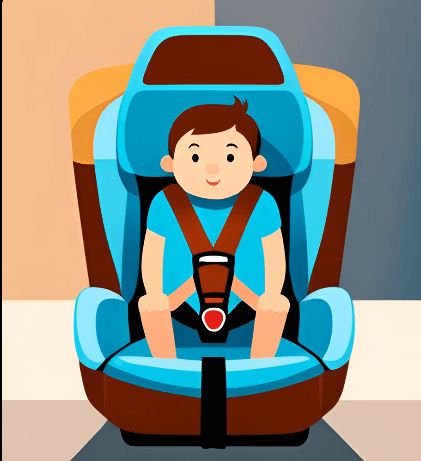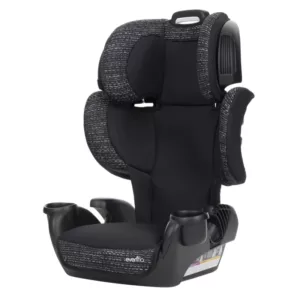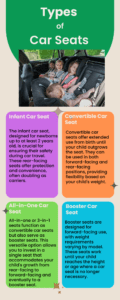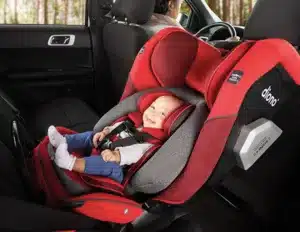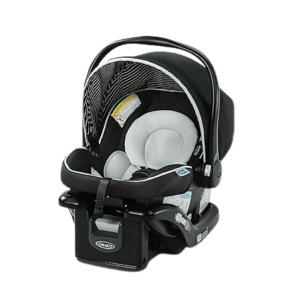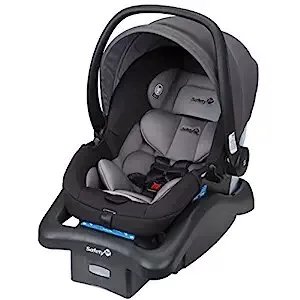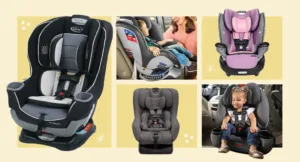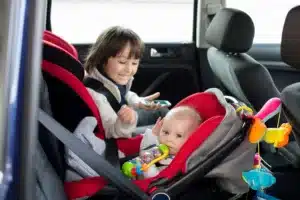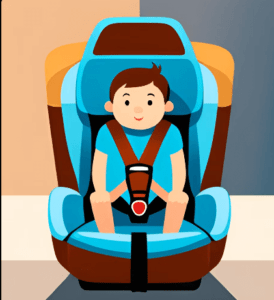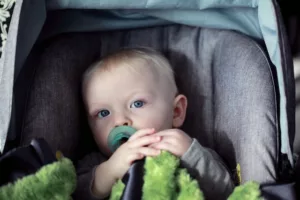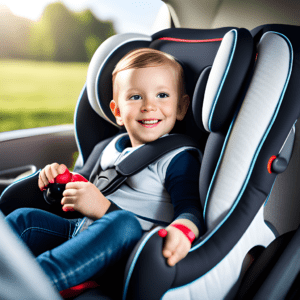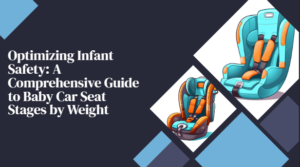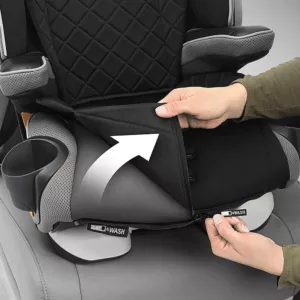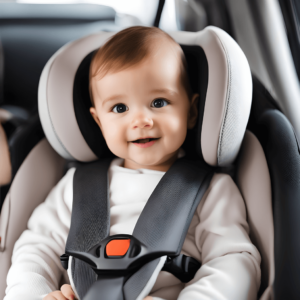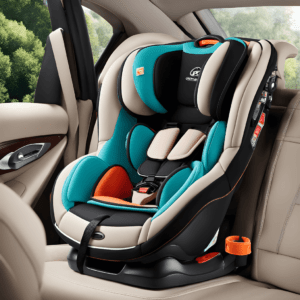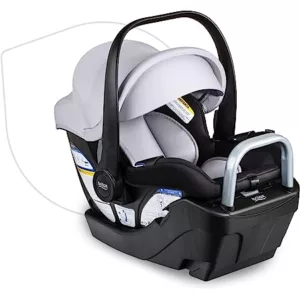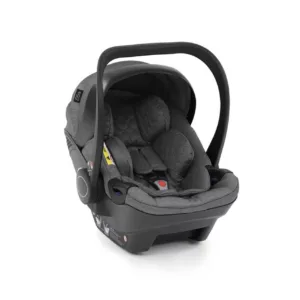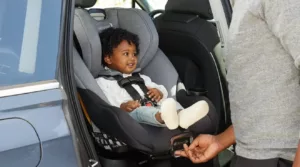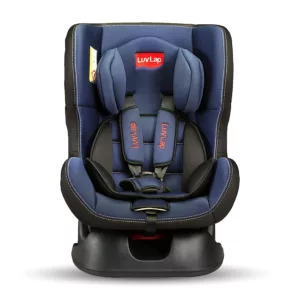Learn the essential steps for how to securely install baby car seats with our complete guide for 2023. Discover expert tips and techniques to securely install infant car seats for your child’s safety.
Thank you for reading this post, don't forget to subscribe!Welcoming a new addition to your family is an exciting time, and ensuring your child’s safety during car journeys is a top priority. Baby car seats protect your little one and reduce the risk of injuries. This comprehensive guide will teach you to safely install and use baby car seats, keeping your precious cargo secure on the road.
What is the Importance of Selecting the Right Car Seat? – Securely Install Baby Car Seat
Understanding why the right car seat is essential is crucial. Different stages of a child’s development require specific types of car seats, offering tailored protection. You safeguard their well-being by using the appropriate car seat for your child’s age and physical development.
Table of Contents
ToggleWhy Proper Installation of a Baby Car Seat is Critical? – Safeguarding Your Little One’s Well-being
Proper baby car seat installation significantly reduces the risk of injuries during accidents.
Studies show that correctly installed car seats can minimize the chance of deadly grievances by up to 71% for infants and 54% for children. It mitigates the impact of collisions, stabilizes the child’s body, avoids Ejection, and maintains proper positioning for optimal protection.
For the following reasons, proper installation is vital:
- Preventing Injuries During Accidents
- Mitigating the Impact of Collisions
- Stabilizing the Child’s Body
- Avoiding Ejection from the Car Seat
- Maintaining Proper Positioning
- Compliance with Safety Regulations
Proper installation of a baby car seat is not just an optional step—it is critical for ensuring the safety and well-being of your child during car journeys. By preventing injuries, mitigating the impact of collisions, stabilizing the child’s body, avoiding ejection, maintaining proper positioning, and complying with safety regulations, you provide your little one with the highest level of protection possible. Take the time to install the car seat carefully, following the manufacturer’s instructions and seeking professional guidance. Remember, your child’s safety should always be the top priority, and proper car seat installation is essential to that commitment.
What are the 10 Steps of Installing a Baby Car Seat? – A Step-by- Steps Guide to Securely Install a Baby Car Seat
Ensuring the safety of your precious little one during car journeys begins with the secure installation of a baby car seat. Proper positioning, securing seat belts, and correctly utilizing the LATCH system is essential for maximum protection. This comprehensive step-by-step guide will guide you through each stage of the process, highlighting each aspect with diagrams to enhance clarity. Let’s embark on this journey to secure your child’s safety on the road:

Steps for Securely Install a Baby Car Seat | Description |
Step 1: Selecting the Right Car Seat | Before installation, ensure you have the appropriate car seat for your child’s age and weight. Check the manufacturer’s guidelines and confirm that the seat meets safety standards. |
Step 2: Choose the Correct Seating Location | Identify the safest seating location in your vehicle for the baby car seat. The rear seat is generally recommended, especially for infants and toddlers. |
Step 3: Positioning the Car Seat | Place the baby car seat in the chosen location, following the manufacturer’s instructions. Ensure that the seat is level, with no excessive recline or tilt. |
Step 4: Rear-Facing or Forward-Facing | If using an infant or convertible car seat, determine whether it should be installed in the rear-facing or forward-facing position. Rear-facing is typically recommended for enhanced protection |
Step 5: Adjusting the Harness Straps | Secure your child in the car seat by adjusting the harness straps. Ensure the straps lie flat against the child’s body without twists. The harness should be snug, with no slack, and the chest clip should be positioned at armpit level. |
Step 6: Utilizing Seat Belts for Installation | Use seat belts for installation for car seats without the LATCH system or when the weight limit is exceeded. Follow the manufacturer’s instructions for threading the seat belt correctly through the designated path on the car seat. Ensure the seat belt is locked securely. |
Step 7: Installing with the LATCH System | If your vehicle is equipped with the LATCH system, use it as an alternative to seat belts. Locate the lower anchors in your vehicle’s rear seat and attach the connectors from the car seat to the anchors. Apply firm pressure and verify a tight connection. |
Step 8: Tethering for Added Security | For forward-facing car seats, secure the tether strap to the appropriate anchor point in your vehicle. Consult your vehicle’s manual to locate the tether anchor and attach the rope to the car seat as instructed by the manufacturer. |
Step 9: Double-Check for a Secure Installation | After installation, conduct a thorough check to ensure the car seat is securely installed. Confirm that the seat does not move more than one inch in any direction when tugged at the base or near the belt path. |
Step 10: Regularly Inspect and Adjust | Regularly inspect the car seat for any signs of wear, damage, or recalls. Adjust the harness straps and recline the angle as your child grows. |
With this step-by-step guide, you know how to securely install a baby car seat, ensuring your child’s safety on every car journey. Follow the manufacturer’s instructions, properly position the seat, secure seat belts or use the LATCH system correctly, and conduct regular inspections. By prioritizing your child’s safety and taking the necessary precautions, you can enjoy peace of mind.
Watch Videos to Securely Install Baby Car Seat
Child Passenger safety Installation
Install Baby Car Seat by Maxi-Cosi
Ensuring Proper Fit and Adjustment for Maximum Safety and Comfort – Correctly securing infant car seat
A snug fit and proper adjustment is vital for your child’s safety and comfort. Adjust the harness straps, evaluate tightness with the pinch test, position the chest clip at armpit level, and ensure the appropriate headrest and recline angle. Regularly reassess the fit as your child grows to maintain optimal protection.
What are the Common Installation Mistakes Parents Make? – Securely Install Baby Car Seat
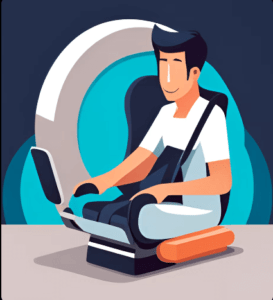
Parents often unknowingly make common installation mistakes that can compromise the car seat’s effectiveness. In this guide, we will discuss these common errors:
Loose Installation – Properly Installing Child Car Seat
One of the most common mistakes is failing to secure the car seat tightly. A loose installation can increase the risk of injuries during an accident. To avoid this, follow the manufacturer’s instructions carefully, ensuring that the car seat is securely attached to the vehicle’s seat, whether using seat belts or the LATCH system. Double-check the tightness by tugging the base and near the belt path to ensure minimal movement.
Incorrect Recline Angles – Installing car seat for maximum safety
Another mistake is setting the car seat at an incorrect recline angle. Improper reclining can compromise the protection the car seat provides, especially for infants who cannot support their heads. Always refer to the manufacturer’s guidelines to determine the appropriate recline angle based on your child’s age and the type of car seat. Use the car seat’s built-in recline indicators or adjusters to achieve the correct angle.
Improper Use of Harness Straps – Securely Fastening Child Car Seat
Misusing the harness straps is a common mistake that can affect the security of the car seat. Ensure the harness straps lie flat against your child’s shoulders, without twists or folds. They should be snug but not overly tight, allowing a flat hand to slide between the straps and your child’s chest. Additionally, position the chest clip at armpit level to properly position the straps on the shoulders.
Incorrect Forward-Facing Transition – Securely Install Baby Car Seat
Switching from rear-facing to forward-facing too early is another common error. Rear-facing car seats provide better protection for infants and toddlers. Follow the weight and height limits specified by the car seat manufacturer before transitioning to a forward-facing position. It is generally recommended to keep children rear-facing for as long as possible within the limits of the car seat.
Not Reading the Car Seat Manual
Many installation mistakes can be avoided by thoroughly reading the car seat manual. It contains important instructions and guidelines specific to your car seat model. Take the time to familiarize yourself with the manual to ensure proper installation and usage. If you have any doubts or questions, contact the car seat manufacturer or a certified technician for assistance.
By avoiding common installation mistakes, you can provide your child with the highest level of safety in their baby car seat.
Additional Safety Tips for a Secure Baby Car Seat Installation – Going the Extra Mile
There are extra safety measures you can take further to enhance your child’s protection during car journeys. Here, we would like to share some essential additional safety tips to ensure a secure installation of your baby’s car seat:
Safety Tips – Securely Install Baby Car Seat | Details |
Avoid Aftermarket Accessories | Aftermarket accessories, such as strap covers, headrests, or seat inserts, can interfere with the proper fit and function of the car seat. Stick to accessories provided by the car seat manufacturer. |
No Bulky Coats or Clothing | Thick layers can create a gap between the harness straps and your child’s body, compromising the effectiveness of the harness. Dress your child in thin, snug layers and use a blanket or car seat cover for warmth. |
Follow Rear-Facing Recommendations | Rear-facing car seats provide optimal protection for infants and toddlers. Keep your child rear-facing as long as possible, following the weight and height limits specified by the car seat manufacturer. |
Regularly Inspect and Replace | Regularly inspect your baby’s car seat for signs of wear, damage, or recalls. Check the seat’s expiration date and ensure it is within the recommended timeframe for safe use. Contact the manufacturer for guidance if needed. |
Secure Loose Objects | Secure loose objects in the vehicle to prevent them from becoming projectiles during sudden stops or collisions. Stow toys, bags, and other loose items to ensure they do not interfere with the car seat or pose a danger. |
Minimize Distractions | Stay focused and eliminate distractions while driving, such as refraining from using your phone or participating in activities that take your attention away from the road. Focusing on safe driving practices ensures the overall safety of your child and everyone in the vehicle. |
What Directions NHTSA Recommendations for Securely Install a Baby Car Seat?
The National Highway Traffic Safety Administration advocates the secure installation of baby car seats. Firstly, it is crucial to carefully read and obey the instructions provided by the car seat manufacturer. Choosing the appropriate seat based on your child’s age, weight, and height is vital. Install the car seat in the back seat, away from active airbags, using either the seat belt or the LATCH system. Ensure the seat is securely installed and properly angled according to the manufacturer’s instructions. Harness your child correctly, positioning the straps at the appropriate level.
If needed, seek assistance from a Child Passenger Safety Technician for professional guidance. Following these guidelines and staying informed of any updates from the NHTSA will help ensure the proper installation and use of a baby car seat for optimal safety.
Final Note
Installing a baby car seat guarantees your child’s safety and well-being while travelling by car. You can significantly damage yourself by following the manufacturer’s instructions, selecting the right car seat for your child’s age and weight, and using the appropriate installation method (whether seat belts or the LATCH system).
Properly installing a baby car seat is vital for your child’s safety during car journeys. You provide the highest level of protection by adhering to guidelines, selecting the right car seat, following step-by-step instructions, and avoiding common mistakes. Remember to regularly inspect the car seat and seek professional assistance when needed. Prioritize your child’s safety to enjoy peace of mind on the road.
Frequently Asked Questions – FAQ
What is the best position to install an infant car seat?
If available, the best position to install an infant car seat is the rear seat, specifically the middle rear seat.
How do you install anchors on a car seat base?
To install anchors on a car seat base, locate the lower anchors in your vehicle’s rear seat and attach the connectors from the car seat base to the anchors. Apply firm pressure and verify a tight connection to ensure a secure installation.
What are the two ways to install a car seat?
The two ways to install a car seat are the seat belt installation method or the LATCH installation
Is it safe to install an infant car seat without the base?
Installing an infant car seat with the base is generally only recommended. The base provides added stability and ease of installation, ensuring a secure fit for the car seat. However, if the car seat manufacturer explicitly states that it can be installed safely without the base, following their instructions is crucial.
Related Article:
Top 10 Emergency Plan for Baby Car Seat
